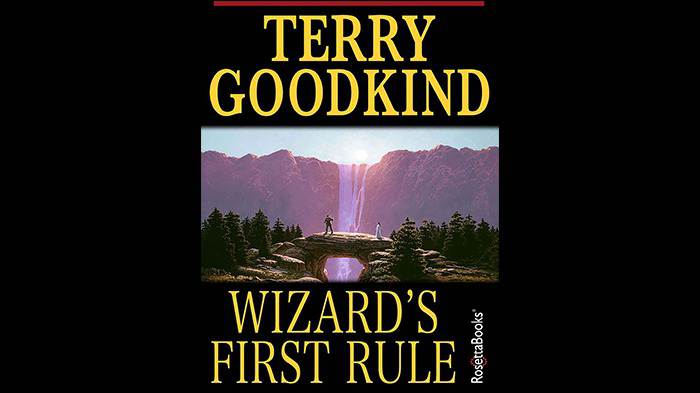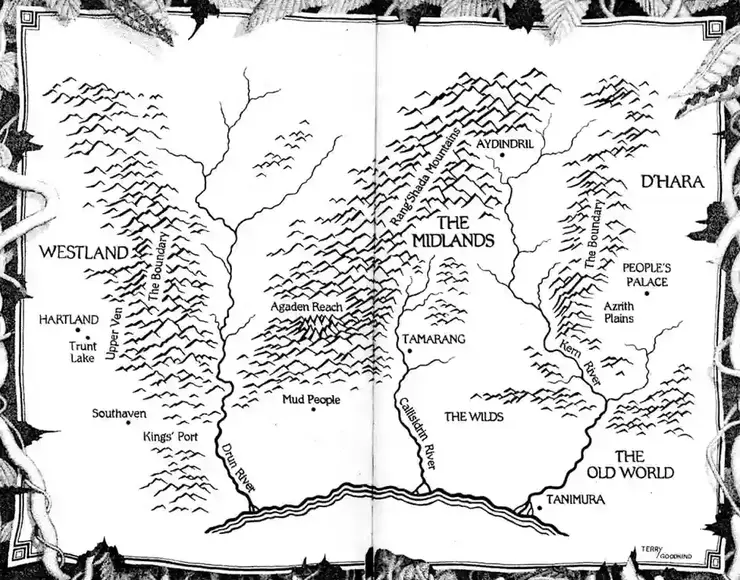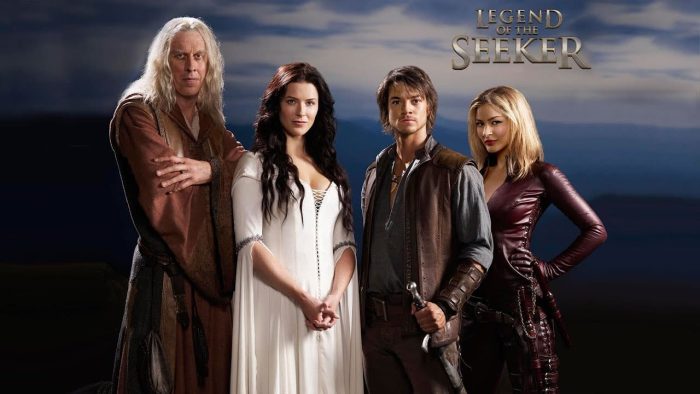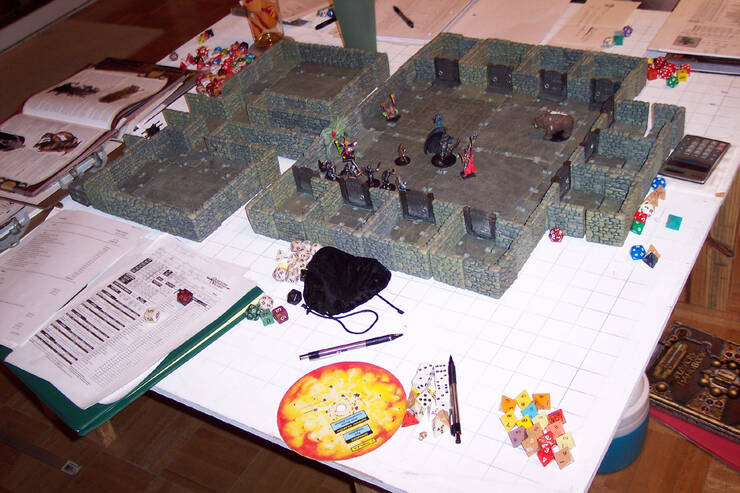
| Genre | High fantasy, grimdark fantasy |
| Author | Terry Goodkind |
| Language | English |
| Number of Pages | 836 |
| Release Date | 15 August 1994 |
Wizard’s First Rule is the first part of Terry Goodkind’s series Sword of Truth. The book was released back in 1994, and it has gained millions of followers around the globe. The book itself is a fairly easy read. In this review, I will give a full breakdown of the book with minimal spoilers. The story itself has a very strong 1990s fantasy series vibe to it. A group of people banding together to save the world from impending doom – basically that’s the plot. It is packed with action, suspense, adventure, sorcery, and, of course, romance. Pretty standard stuff one might say, but Terry Goodkind’s Wizard’s First Rule managed to extend on the regular high-fantasy style of old and put elements of dark fantasy in it as well. Without further ado, let’s dive in and see what our heroes faced in the first part of the Sword of Truth series.
Wizard’s first rule world-building
The world in which the plot is set is both horrifying and magical. The reader of the Wizard’s First Rule will quickly learn that magic is both a blessing and a curse for many residents of the Three Territories. A great thing about this world is its mythical creatures; some of them are completely new to the fantasy genre. The ecology of how magical creatures fit into the ecosystem is also dealt with in the novel, which is nice for a change (most fantasy novels just stuff magical creatures without explaining how they actually fit in the biosphere). Magical barriers called Boundaries divide the New World into three parts:
- Westlands – a land in which no magic exists
- Midlands – a group of small nations without a single ruler
- D’hara – a nation of warriors led by presiding Lord Rahl

A map of the New World as described in Wizard’s First Rule
The magic system set in this world is very complex. Terry Goodkind tries to explain it to us, but despite his efforts in the first book, magic seems very inconsistent. Maybe we are just used to magic in video games and on TV; in Fizard’s First Rule, most characters can’t simply cast a desired spell when needed. I assume the intention was to put a mystical touch by doing so, but sometimes it just feels like things happen just because the plot requires it to happen in terms of magic. The whole thing about the first book’s biggest MacGuffin, Boxes of Orden, felt very unrealistic and illogical. Be it as it may, magic is everpresent in the first book, and you’ll get plenty of it.
The Seeker of Truth and his companions
Terry Goodkind spends a lot of time building up the characters. Although some readers argue that the characters are generic (a young hero protagonist, a damsel in distress, an old wise wizard, and an utterly evil antagonist), the author tries to expand on that by developing complex relationships between them. History is a big part of Wizard’s First Rule as well, and we get a lot of background on these characters.
The main plotline follows the Seeker of Truth, Richard Cypher. The Seeker is accompanied by Mother Confessor Cahlan Amnel and a Wizard of the First Order, Zedacus Zul Zulander. The thing that bothers me a bit is the fact that Richard is so pure and innocent that he almost doesn’t come out as human at all. He is always right, and even when he is not, there will be a deus ex machina event that will justify his mistakes. However, since this is the first novel, those kinds of things are to be expected.

The Legend of the Seeker cast, based on the characters from Wizard’s First Rule
On the other hand, Cahlan Amnell is written extremely well, with all her strengths and weaknesses. Although a damsel-in-distress type of character at first sight, she turns out to be much more than that. The same goes for one of the side charters, the mord-sith Denna. Denna’s character arc is by far the most controversial and complex arc in the first novel. Personally, I liked it, although I understand why some readers despise her. Zedacus serves as comic relief, and to be honest, it’s not a very good one sometimes. The reason this doesn’t sit well is the fact that his description is so OP – he is literary the greatest wizard alive, but sometimes he behaves like Harry Potter before hitting puberty. I get the whole comedy thing, but still, I feel that this character should have been written better.
The main antagonist, Darken Rahl, is the presiding Lord Rahl and is described as an utterly ruthless villain. Terry Goodkind tried to justify some of his actions and make us understand his side, but in my case, that fell flat. He is so over the top on his sadistic side that it’s hard to understand some of his actions other than seeing them as pure evil.
Other characters basically serve as fillers. I would say that this worked well in the first novel. Overall, the characters are compelling, and you will start caring for them in an instant. However, the cost of all this is that we don’t really get to meet the people of the Three Territories since the plot constantly focuses on the main characters.
Wizard’s First Rule Plot: A Perfect Layout for a D&D Session
The plot follows the main characters but not the main storyline for most of the novel. I like that a lot; it feels like you are playing an open-world RPG game from time to time. Wizard’s First Rule is the perfect setting for your D&D session. All the elements are there – you have a group of characters that feel like a WoW party since one of them can tank, another can do some quick DPS, while a wizard can provide support. Hell, you even get a kind of combat res later on in the series. I get that some readers might dislike this, but for me, this is what really sets the pace of the series.

D&D sheets and figures
The problem arises with the fact that the main plot stops all the time and characters just seem to wander on a side quest. You know, like in a game when you want to explore more of the territory in which you are before you move to the next one. Another issue is the lack of foreshadowing. Actually, there is foreshadowing, but it’s not handled very smoothly, and a careful reader will foresee the plot twist several hundred pages before it actually happens. Although the plot is predictable, there are some wild plot twists that occur without any foreshadowing at all. The whole Denna part of Wizard’s First Rule feels like it’s from another book that is from another genre. And somehow that works – it really gives the novel a kind of diversity when it comes to genre mixing.
Legend of the Seeker or Wizard’s First Rule?
Wizards First Rule and Stone of Tears served as source material for one of the most underrated fantasy TV shows called Legend of the Seeker. After it got canceled, it sparked a debate between book fans and TV show fans. Although the source material was vastly changed and adapted for the show, I feel that the general idea was still there. The show is a “based on” type of show, and as such, it is an interesting one to watch. The series did follow the main plot but the side quests were changed drastically. Some of the hardcore stuff from the novel was adapted so that younger viewers could see the show, and many motives from later books in the series were taken and stuffed into the main plot of the first two novels. Be that as it may, I advise you to check them both out and find out which one suits you more.
How original was Terry Goodkind?
Debates are still ongoing online on Terry Goodkind’s story idea originality. The problem is that Terry paid a lot of homages, and some readers see that as blatant stealing. Also, there are a lot of things and general story ideas that can be seen in other stories. I gathered a quick, non-spoiler list of some of the motives that Terry either paid homage to or re-used in the Wizard’s First Rule:
- The main character is a Chosen One wielding a magical sword
- The main antagonist’s agenda is to unite the world by bending it to his will through the usage of an ancient magical item
- The main character is accompanied by a beautiful woman whom he falls in love with
- A mystically wise but very primitive tribe aids our good guys in their quest
- The evil sorceress tries to stop the main protagonist
- A wicked queen being wicked in her castle
- Gollum. I’m not kidding, Golum is really there and he is called Samuel
- A wise old wizard aiding the main character on his quest

There are many more, but due to spoiler issues, I won’t write about them here. The point is, Terry really did rely heavily on authors who wrote fantasy before him. Some may even argue that he used a skeleton of the Wheel of Time for his Wizard’s First Rule. I can definitely say that the main story idea is not an original one. Just by looking at the main characters, they don’t seem very authentic either. The main plot is predictive and follows a well-known fantasy pattern.
I will argue that these things do not influence your reading experience. The thing is, although Terry did use some well-known motives from the fantasy genre, he also added something new to each of them. Just a quick example, in Wizard’s First Rule we get to see Hearthounds. They hunt their victims by using their supernatural hearing and following the heartbeat of their prey. Also, the first thing they eat is the heart – making them notorious keepers of the Underworld, the world of the dead. As we can all see Hearthounds are basically versions of Hellhounds and Cerberus. However, Goodkind added his own personal touch to this mythical creature, making it unique.
The same goes for the rest of the novel – well-known creatures and motives are there, but the author didn’t simply steal from others. Terry Goodkind’s Wizard’s First Rule will show you the things you know – but in a different way. And that’s the beauty of this novel – the author managed to make a unique novel using cliche characters and well-known motives.
Is Wizard’s First Rule a high fantasy, low fantasy, or grimdark fantasy novel?
Speaking genre-wise, Wizard’s First Rule is a mess. I’ve already said that certain parts of the book feel like they were taken from some other book and just stuffed in there. Don’t get me wrong on this – Terry Goodkind made this work. The novel starts as a mega-cliche high fantasy one. Soon, it turns into a light romantic fantasy story. But just as you get bored of it, the author changes the tone entirely and writes a hundred pages in which the main themes are severe torture, brainwashing, conditioning, and graphic violence. After it, we return to our epic fantasy genre, and so on, you get the point. I suppose Goodkind wanted to make a contrast between good guys and bad guys in his novel with this. It could have been integrated better, in my opinion, but it is still super fun to read.
Final thoughts on the Wizard’s First Rule
This is not the best fantasy book that was ever written. Reading reviews online, I felt that many readers expected just that – probably because of the popularity of Wizard’s First Rule. Although it might not be the best, it is still worth your time. I guarantee that you will at least enjoy the world that Terry has created. Exploring new worlds is what fantasy is all about, and who knows – maybe you’ll decide to stay in it and read the sequel, Stone of Tears.
